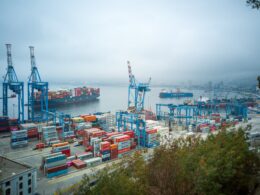For this month’s blog post, Pól Sweeney has handed over to Chris Jones, EVP Marketing & Services at Descartes Systems Group who is discussing home delivery logistics.
Technology has been helping to enable online supply chains for over 10 years. However, the original model relegated the supply chain to a background operation. With an increasingly saturated on-line market, offering differentiated services and new revenue opportunities have become critical success factors. To better compete, leading retailers are making their supply chains and in particular supply chain technology, part of the total customer experience, starting at the order and ending after the goods have been delivered. Interestingly, this approach not only benefits the consumer but it also helps retailers drive down their own costs and improve productivity. The strategies and technologies for better leveraging home delivery are rapidly advancing across the globe.
One of the biggest challenges for retailers is creating delivery density that helps drive down delivery costs by lowering the number of miles driven to serve each consumer. The best place to increase delivery density is when the consumer is ordering. Rather than using static delivery slots, dynamic delivery appointment scheduling technology provides consumers with delivery windows that take into account orders already in the system and the costs of the delivery options unique to that customer. The retailer can chose which options to present to the customer to help increase delivery density, improving productivity and reducing costs.
Dynamic delivery scheduling also provides an opportunity to drive incremental revenue through premium delivery windows and value-added services. John Lewis, for example, during the buying process offers its customers multiple delivery window options (e.g. 7 hour, 4 hour and 2 hour) at the same time and prices them accordingly. In addition, value added services such as installation of items such as large screen TVs are “one click” options that consumers can easily choose before they check out. The result?
John Lewis has added millions of pounds to their top line as the delivery options presented drive buyer behaviour and consumers select premium delivery windows and incremental services.
Home delivery strategies and technologies are evidentially rapidly evolving. However, it is clear that leading retailers across the globe are using technology to make their supply chain part of the “front office” to unlock value for their customers and their own company.
Chris Jones, EVP Marketing & Services at Descartes Systems Group
www.descartes.com












